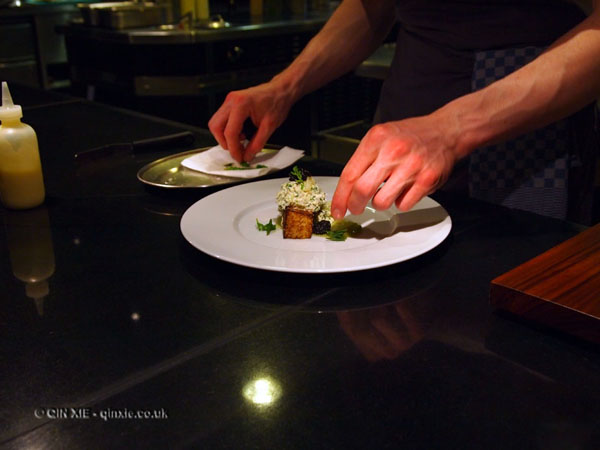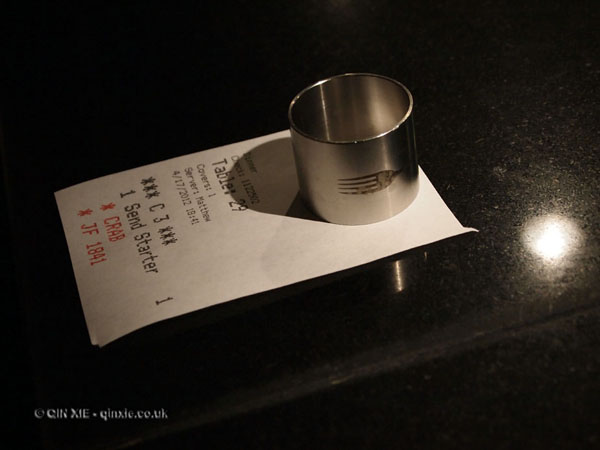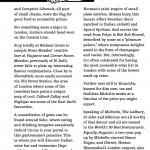Published on Jancis Robinson on 16th June 2012:
Something tells me that Qin Xie (or is it Xie Qin?) knows quite a bit about the kitchens of Dinner, Heston Blumenthal’s restaurant in London’s Mandarin Oriental…JR
When dining in London, and particularly in affluent areas like Knightsbridge, you expect to pay above the average for your meal. The location of the restaurant alone dictates much of the price, and that’s before you’ve factored in the ingredients, the service or the chef. Yet there is one particular restaurant which I’ve found surprising value in: Dinner by Heston Blumenthal.
First, let me put up my hand and say I haven’t actually eaten there as a guest yet. Instead, I’ve been fortunate enough to taste the majority of the menu as a stagiaire and seen the intricacies behind their creation.
Guided by Blumenthal’s reputation at the Fat Duck, you might think what sets Dinner apart from other restaurants is its employment of molecular gastronomy. Not so – it’s really a modern interpretation of age-old recipes, done with Blumenthal precision.
Take Meat Fruit for example, it’s possibly the most popular thing on the menu in terms of both column inches and numbers sold. What’s not on the menu under ‘mandarin, chicken liver parfait & grilled bread’ is the metamorphosis of foie gras, chicken liver, shallot reduction and eggs, amongst other ingredients, into that pristine tangerine. From start to finish, the two-day process takes the raw ingredients through the Thermomix, the temperature and humidity-controlled oven, the blast chiller, the flash freezer and more; and each step is dictated by a precise time and temperature.
Even more strenuous, perhaps, is the exercise which takes whole cucumbers to their fluid gel state. The gel uses only juice from the green peel, combined with gellan powder, processed via the Thermomix and put through a chinoise multiple times. Every batch is rigorously taste tested for flavour, colour as well as consistency – even a slight graininess to the texture, say from the mixture not being allowed to rest for long enough, would mean starting the whole operation from scratch. The result, I am told by Canadian chef Kimberley Hernandez, is ‘the smoothest fluid gel you will find anywhere and certainly better than anything you can find in North America’.
The food is not just checked by the Group Executive Chef Ashley Palmer-Watts at the pass. The impressive attention to detail extends from prep, to pass and finally plate. Watching over my first service in the show kitchen, I spotted two consecutive eggs for the broth of lamb being discarded. Curious, I asked Hernandez what was wrong with them. ‘They weren’t perfect,’ came the response. Seeing that I was lost for words, Hernandez explained that the covering over the yolk has to be even and consistent so that the plate arrives at the table in just the right way – tending to perfection.
The real action, though, takes place in the prep kitchens downstairs, where the distinguishing feature and one of Dinner’s greatest expenses is made – their stocks. Rather than using trimmings and offcuts, as is traditional with stock making, all of the stocks and sauces are made using purposely purchased ingredients. Meticulously prepared by Pip Sandrey using pressure cookers and blast chillers before being filtered and reduced from 40 litres to something like four, the final product could be compared to the finest distillates. And that really is how something which appears so simple on a plate can contain so much flavour.
Now let us consider the price.
For three courses à la carte and without wine, you will be expected to pay in the region of £60 plus service. This may sound rather steep if you’re used to entire meals costing the same as you might fork out for a main at Dinner, but compared with restaurants in similar areas, £60 isn’t really a price tag worth blinking at. And when you consider the different components of each dish and the processes that produced the results, you realise that it’s not just a plate of food in front of you but rather something much more like art. In that respect, some might say, it’s really rather good value for money. Perhaps that’s part of what prompted me to finally pick up the phone and make that Dinner reservation.



